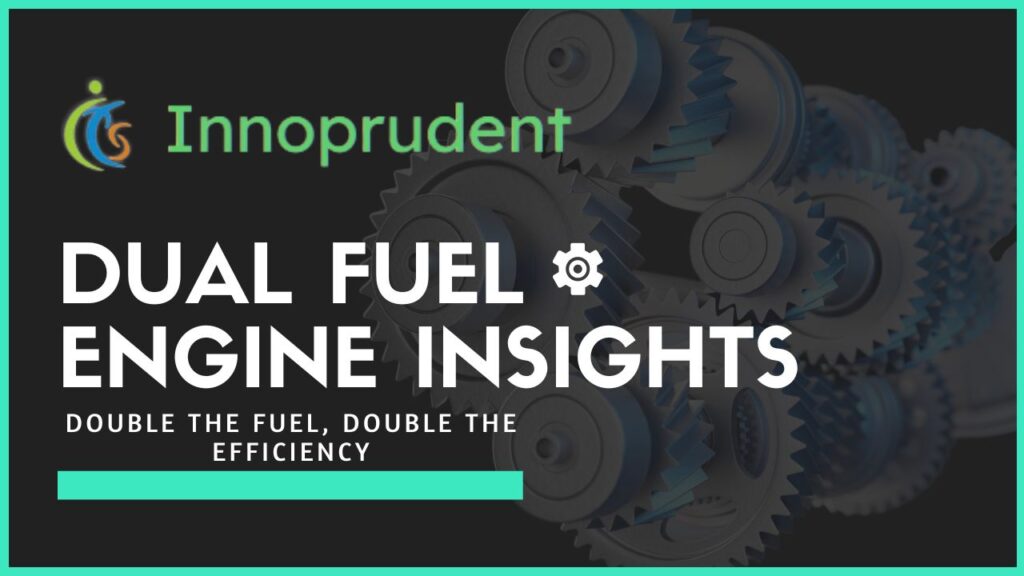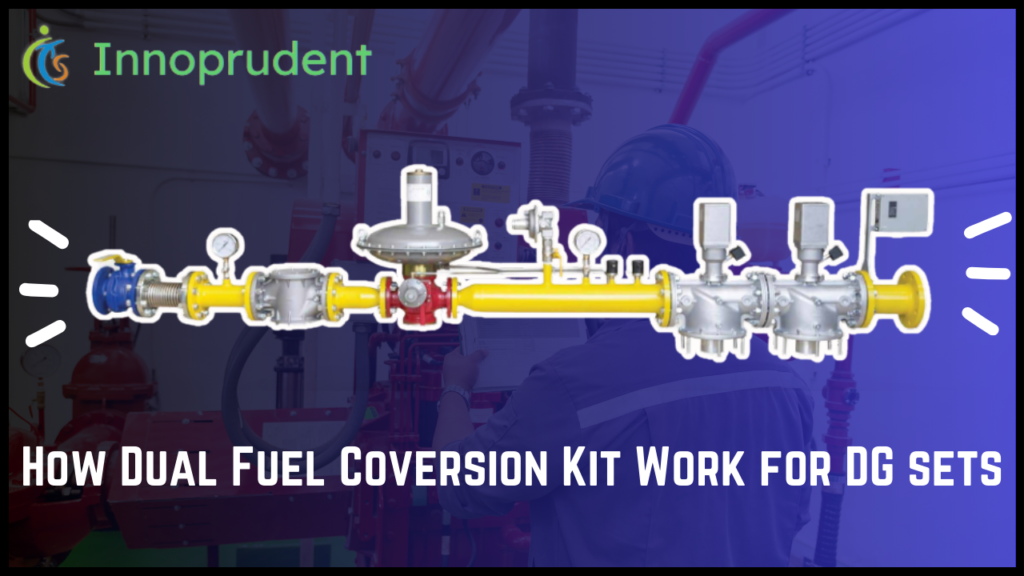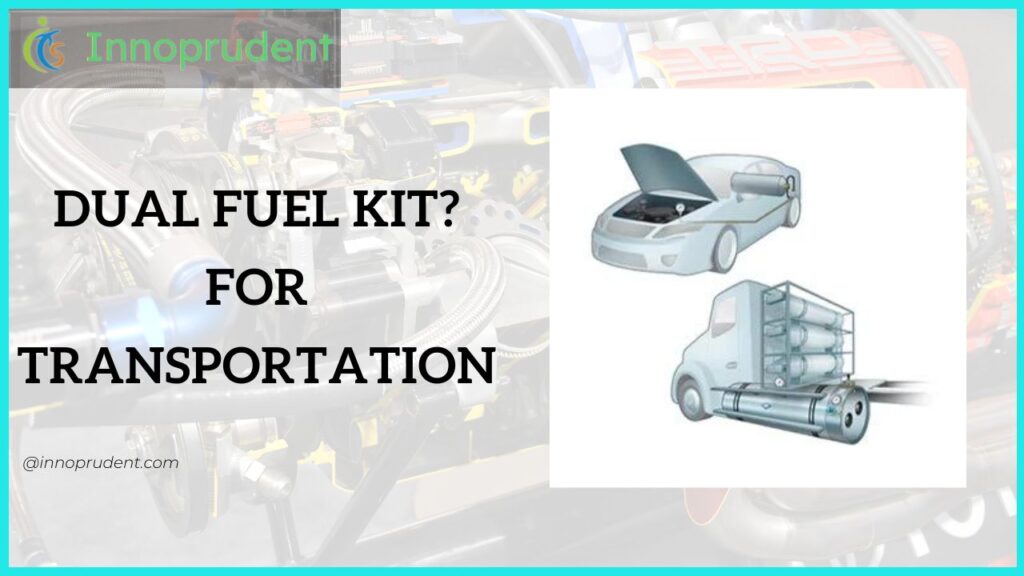Imagine a world where your car could switch between fuels depending on availability, cost, or even environmental impact. What if ships could sail the seas, choosing their energy source based on the changing tides of the global fuel market? This isn’t a glimpse into a futuristic sci-fi story, but rather the innovative realm of dual fuel engines. Combining the strengths of two different fuels, these engines are the unsung heroes driving us toward a more adaptable and sustainable future. Dive in as we explore the intricate dance of diesel and gas, and uncover the brilliance behind dual-fuel engines.
What are Dual Fuel Engines?
A dual fuel engine operates using two distinct fuels, usually introduced into the engine simultaneously or in quick succession. The most common combination involves a primary fuel (typically diesel) that ignites through compression, and a secondary fuel (often natural gas) that’s mixed with the intake air and ignited by the primary fuel’s flame.
Working Mechanism of Dual Fuel Engines
At the heart of every machine is a process, and the dual fuel engine is no different. Combining two fuel sources into one efficient system might sound complex, but let’s break it down step by step to understand the elegance behind its operation.
1. Air and Fuel Intake:-
- The engine begins by drawing in air through its intake valves, much like any conventional internal combustion engine.
- Simultaneously, the secondary fuel, often natural gas, is mixed with this intake air. This mixture is then directed into the engine’s combustion chambers.
2. Compression:-
- Inside the combustion chamber, the air-fuel mixture is compressed by a piston. This compression raises the temperature and pressure of the mixture, preparing it for ignition.
3. Primary Fuel Injection:-
- Just before the air-fuel mixture reaches its highest compression point, the primary fuel, usually diesel, is injected into the chamber. Diesel has been the choice for primary fuel due to its high auto-ignition temperature, meaning it ignites under high pressure and temperature without the need for an external spark.
4. Ignition and Combustion:-
- The injected diesel ignites first due to the high temperature and pressure created by the piston’s compression. This ignition creates a flame front.
- This flame then ignites the compressed air-natural gas mixture. The resulting combustion pushes the piston down, creating the power stroke that turns the engine’s crankshaft and provides it with power.
5. Exhaust:-
- After the combustion, the burnt gases are expelled from the combustion chamber through the exhaust valves, making space for a fresh cycle to begin.
What makes dual fuel engines especially fascinating is their adaptability. If, for any reason, the secondary fuel (natural gas) is unavailable, the engine can still operate on just the primary fuel, though the efficiency and emission profiles might differ.
In essence, a dual fuel engine seamlessly integrates the characteristics of two fuels, providing flexibility in operation, potential efficiency gains, and often a cleaner emission profile. This synergy is what sets them apart from traditional single-fuel engines, making them a compelling choice for a variety of applications.
Key Advantages of Dual Fuel Engines
- Fuel Flexibility: Dual fuel engines offer the freedom to switch between fuels based on availability and cost. In areas where natural gas might be cheaper or more accessible, the engine can run predominantly on gas, utilizing only minimal diesel for ignition.
- Environmental Benefits: Natural gas, when used as a secondary fuel, burns cleaner than diesel, emitting fewer particulates, nitrogen oxides, and greenhouse gases. This can result in a significant reduction in emissions, especially in sectors like transportation and power generation.
- Efficiency: Combining the best of both fuels, dual fuel engines can achieve higher thermal efficiencies than single-fuel engines.
- Operational Continuity: In case the supply of one fuel gets disrupted, the engine can still operate, albeit at reduced efficiency, on the other fuel.
- Potential Cost Savings: With the flexibility to switch fuels, operators can opt for the more economical option based on fluctuating fuel prices.
Challenges Dual Fuel Engines Faced
- Complexity: Managing two fuel systems can increase the complexity of engine operation and maintenance.
- Initial Investment: Dual fuel engines and their accompanying systems can be more expensive upfront than their single-fuel counterparts.
- Fuel Quality: The quality and consistency of the secondary fuel, especially natural gas, can influence engine performance.
Applications of Dual Fuel Engines
- Maritime Industry: Ships, especially those in international trade, have started adopting dual fuel engines to meet stringent emission standards and hedge against fluctuating fuel prices.
- Power Generation: Dual fuel generators are increasingly being used in power plants for their efficiency and flexibility. They can switch to the available fuel in times of shortage or price hikes.
- Transportation: Buses, trucks, and other heavy vehicles in cities are considering dual fuel options to reduce emissions and operating costs.
- Industrial Applications: Industries that require substantial power for their operations, like mining and manufacturing, can use dual fuel engines for their in-house power needs.
The Future of Dual Fuel Engines
With the ever-growing emphasis on sustainability and the need for adaptability in a volatile fuel market, the future seems promising for dual fuel engines.
- Technological Advancements: As technology evolves, we can expect improvements in the efficiency, reliability, and affordability of these engines.
- Broader Fuel Combinations: Research is ongoing to explore combinations beyond diesel and natural gas, such as biodiesel, hydrogen, or even certain types of alcohols.
- Policy Impetus: As governments worldwide tighten emission norms and promote greener technologies, dual fuel engines might benefit from policy incentives and subsidies.
- Infrastructure Development: The growth of infrastructure, especially for secondary fuels like natural gas (CNG stations, LNG terminals), will further facilitate the adoption of dual fuel technology.
Some Related Posts
Wrapping up
Dual fuel engines present a versatile solution in the face of rising environmental concerns and unpredictable fuel markets. Their ability to combine the strengths of two distinct fuels while offsetting each other’s limitations makes them a promising technology. With continued research, policy support, and infrastructure growth, dual-fuel engines are poised to play a pivotal role in the future of power generation and transportation.
Some Important FAQs
How do dual fuel engines work?
Dual fuel engines intake air and a mixture of secondary fuel (e.g., natural gas) simultaneously. Compression raises the temperature and pressure, and then the primary fuel (usually diesel) is injected. The diesel ignites due to compression, creating a flame that ignites the compressed air-fuel mixture, driving the engine.
What are the advantages of dual fuel engines?
Dual fuel engines offer fuel flexibility, environmental benefits (lower emissions), improved efficiency, operational continuity, and potential cost savings based on fluctuating fuel prices.
What are the challenges faced by dual fuel engines?
Challenges include increased complexity, higher initial investment costs, and the need for consistent secondary fuel quality for optimal engine performance.
Where are dual fuel engines used?
Dual fuel engines are used in various applications, including the maritime industry (ships), power generation (generators and power plants), transportation (buses and trucks), and industrial settings (mining and manufacturing).
Are there alternatives to diesel and natural gas in dual fuel engines?
Yes, ongoing research is exploring alternative fuel combinations beyond diesel and natural gas, including biodiesel, hydrogen, and certain types of alcohols.



